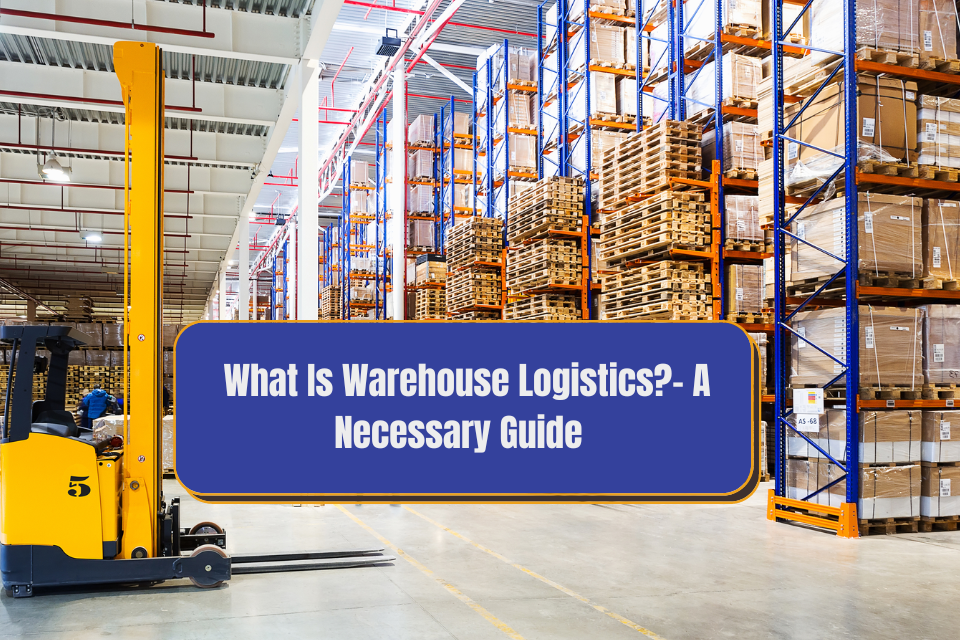Warehouse logistics is the process of storing goods for sale or distribution in an efficient and cost-effective manner. There are many different aspects to warehouse logistics, such as storage, transportation, and distribution. In this guide, we will walk you through the basics of warehouse logistics.
What Is Warehouse Logistics?
An integral part of any supply chain management is warehouse logistics. Products, when they are not moving from one part of the country to another, are stored in a warehouse. At any point of time, there are products being shipped, received and stored in warehouses.
Warehouses are places where finished or partly finished products are stored before they are shipped out to customers or onto the next stage in processing.
It is important to optimize the use of warehouse space. As often, there is a cost associated with storage and handling of products at the storehouse. It is thus important for any business to have a well-developed plan to use warehouse space optimally.
At this point, it must be pointed out that warehousing also produces data that needs processing. By analyzing product demand and delivery schedules, it would be possible to keep costs of warehousing to optimal levels. There are some points that spring to mind immediately when someone speaks of warehouse logistics. They have been outlined below.
- Getting the location just right.
- Need for sufficient capital to set up and manage the warehouse.
- Have an optimized floor plan.
- Get qualified professionals to man the operations.
- Select the right machinery and equipment for the operations.
Benefits Of Warehouse Logistics
Here are some benefits a good warehouse logistics plan brings to businesses:
-
Efficiency
It is seen that introducing a workable warehouse logistics policy brings greater efficiency to the whole activity. Wastages of products are kept to a minimum, and customer orders are fulfilled with the least bit of fuss and cost to the organization.
-
Inventory Management
A proactive warehousing plan produces efficiency in the management of inventories. The sum of money that is tied up as inventory would be kept to the least possible.
-
On time delivery
The very need for efficient warehousing is to deliver the products to the end customer or to the next stage of manufacturing in a timely manner.
-
Operational Costs
There is no denying that by using an effective warehousing policy, it becomes easy to optimize the operational costs of a production line.
-
Customer Satisfaction
The most desirable result of an effective warehouse logistics plan is that customers are always satisfied. By customer, we could mean the immediate end use of the products or the next stage in a manufacturing process.
Types Of Warehouse Logistics
Warehouses can be classified into 5 different types:
-
Private Warehouses
These are warehouses that are established by companies and individuals for their private use. Examples of this type of warehousing include the ones done by farmers, wholesale warehouses near shopping centers, etc.
-
Public Warehouses
Warehouses owned by governmental and semi-governmental bodies that are established for public use come under this categorization. Most public warehouses can be made used by people by paying rent to do so.
-
Bonded Warehouse
These warehouses are custom notified and used to store restricted items of trade. They are also known as licensed warehouses.
-
Co-operative Warehouses
As the very name would suggest, these warehouses are established and run by co-operative societies. They use the collective power of societies to bring in efficiencies that are otherwise not possible.
-
Distribution Centers
The defining aspect of the distribution warehouses is the time that is spent in keeping the products in storage. This is kept to a bare minimum in the case of distribution centers. Most distribution centers have large areas with a quick movement of goods in and out of the space.
How To Budget Warehouse Logistics?
Budgeting for warehouse expenses is taken in five different ways. Each part of the budget has a vital role in the efficient functioning of logistics. This applies to almost all the different types of warehouses discussed here and does vary in intensity with each type as well.
-
Line Supervision
This is the cost associated with establishing a line of movement from entering the warehouse to exiting the facility. The longer the storage at a facility the more the supervision cost incurred.
-
Clerical costs
The manpower costs involved in verifying the storage and movement of goods come under the clerical cost of setting up a warehouse.
-
Information Technology
The cost incurred in purchasing and implementing the controlling software in a warehouse constitutes this cost.
-
Supplies
Supply material like paper, packaging material and so on constitute this part of budgeting.
-
Insurance and taxes
Most governments have taxes and policies that govern warehouse use, that involve the taking out of insurance policies to protect the interests of the people who use the facility.
Warehouse logistics is an essential part of the supply chain and plays a major role in ensuring that products are delivered to customers on time and in the correct quantities. By understanding the basics of warehouse logistics, businesses can optimize their supply chains and improve their bottom line.
Also Read: Different Types of Logistics
And if you are looking for a warehouse logistics service that can take care of your inventory for you? Look no further than Tassgroup. We are experts in the field and can handle all of your needs, from storage to distribution. Contact us today to learn more about our services!



